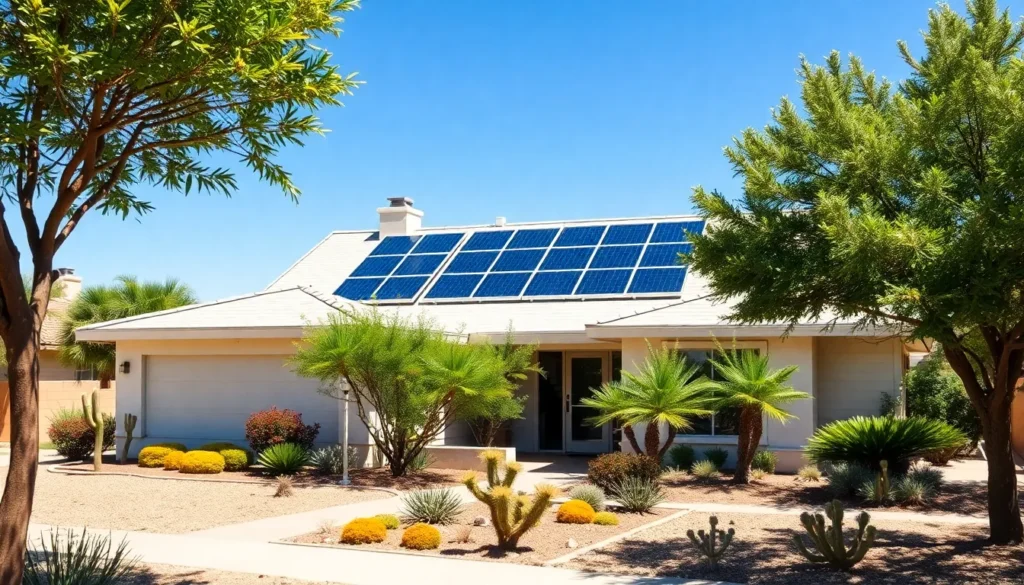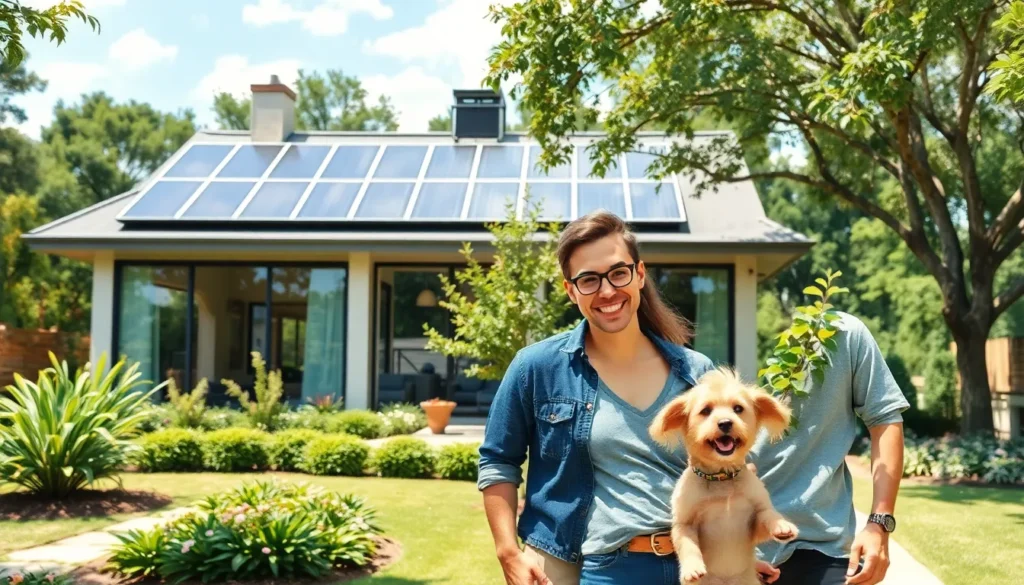Buying a house is like adopting a pet—you love it dearly, but it can drain your wallet faster than a toddler in a candy store. With bills piling up and unexpected repairs lurking around every corner, saving money at home becomes a top priority. Luckily, it doesn’t have to feel like a never-ending episode of a home improvement show gone wrong.
Understanding Saving Tips for a House
Saving for a house involves several strategic approaches. Establishing a dedicated savings account simplifies the process, allowing individuals to prioritize house savings separate from other finances. Setting clear savings goals, such as a 20% down payment, makes it easier to track progress and stay motivated.
Cutting unnecessary expenses helps in putting more money towards a house. Regularly reviewing monthly subscriptions can reveal areas for savings. Setting a budget also provides a framework for allocating funds effectively.
Using automated transfers adds efficiency to the savings process. Automating monthly deposits into the dedicated account ensures consistent savings. It removes the temptation of spending those funds elsewhere.
Exploring alternative income sources can significantly boost savings. Freelancing or part-time jobs can generate additional revenue that contributes directly to a home purchase fund. Selling unused items online or hosting garage sales also provides extra cash.
Taking advantage of government programs aids first-time homebuyers. Various assistance programs offer down payment grants or low-interest loans. It’s crucial to research local resources that align with individual financial situations.
Monitoring homeownership costs helps prevent unforeseen expenses. Preparing for regular maintenance expenses, such as roof inspections or HVAC servicing, reduces financial strain over time. Creating an emergency fund specifically for home repairs enhances financial security.
Implementing these strategies creates a solid foundation for home purchasing. A proactive approach to saving makes homeownership attainable regardless of rising costs and challenges. With careful planning and consistent effort, reaching homeownership goals becomes realistic and achievable.
Budgeting for Your Home

Developing a budget for homeownership plays a vital role in managing finances. A well-structured budget helps individuals understand their spending and savings.
Creating a Realistic Budget
Establishing a practical budget begins with listing monthly income sources. Include all salary and secondary income streams. Next, outline all expenses, such as mortgage payments, utilities, and maintenance costs. Identifying fixed and variable expenses simplifies understanding financial obligations. Allocate specific percentages of income towards savings goals, aiming for a target like a 20% down payment. Adjust the budget regularly to reflect changing circumstances. Flexibility ensures individuals remain on track while managing unexpected costs.
Tracking Expenses Effectively
Tracking expenses provides valuable insight into spending habits. Utilizing budgeting apps or spreadsheets enables accurate records of outgoing funds. Capture all expenditures, from groceries to entertainment. Review these records weekly to identify patterns and areas for improvement. Implement a system to categorize expenses, distinguishing between essentials and non-essentials. Reducing discretionary spending often enhances savings potential. Setting aside time monthly to analyze expense trends fosters better financial management over time. Engaging in this practice can lead to smarter decisions and greater financial stability in the long run.
Energy Efficiency Improvements
Energy efficiency improvements lead to long-term savings and comfort. Investing in these upgrades helps reduce utility bills significantly.
Insulation and Weatherproofing
Enhancing insulation boosts home comfort and lowers energy costs. Insulate walls, attics, and floors using materials like fiberglass or spray foam. Proper sealing of gaps around windows and doors prevents drafts and minimizes heat loss. A well-insulated home can save up to 20% on heating and cooling expenses. Consider energy audits to identify specific areas needing improvement. Upgrading insulation pays off over time, making it a wise investment.
Energy-Efficient Appliances
Replacing old appliances with energy-efficient models saves money on utility bills. Look for ENERGY STAR ratings to ensure appliances meet efficiency standards. Washing machines, refrigerators, and dishwashers consume less energy, reducing costs. On average, energy-efficient appliances save homeowners 10-50% in energy expenses. Prioritize replacing the most used appliances first for maximum savings. This upgrade not only cuts costs but also supports environmental sustainability.
Smart Shopping Strategies
Smart shopping strategies help maximize savings on home-related purchases. Implementing these strategies allows individuals to manage expenses more effectively while aiming for homeownership.
Researching Best Prices
Comparison shopping remains essential for making informed buying decisions. Using online price comparison tools can reveal the best deals across various retailers. Visiting store websites allows users to view current promotions and sales. In addition, signing up for retailer newsletters can provide notifications about special discounts. Monitoring items over time aids in understanding price trends, ensuring a good purchase when the price drops.
Utilizing Discounts and Coupons
Taking advantage of discounts and coupons can lead to significant savings. Many retailers offer loyalty programs that provide exclusive offers to members. Smartphone apps geared towards couponing make finding relevant discounts easy. Planning purchases around seasonal sales often yields better prices. Additionally, combining store promotions with manufacturer coupons further enhances overall savings. Those small savings add up, creating more opportunities to allocate funds toward a future home.
Maintaining Your Home
Home maintenance contributes significantly to saving money in the long run. Regular upkeep prevents costly repairs and enhances property value.
Regular Maintenance Tips
Prioritize seasonal inspections to catch issues early. Schedule gutter cleaning twice a year to avoid water damage. Inspect roofs for missing shingles or leaks, addressing problems immediately. Change HVAC filters every three months to maintain efficiency. Clean appliances, including refrigerators and dishwashers, to improve performance. Trim trees away from the house to prevent damage during storms. Lastly, check smoke detectors monthly to ensure safety compliance.
The Importance of DIY
Taking on do-it-yourself projects can save money and empower homeowners. Learning basic repairs like fixing leaky faucets or patching drywall reduces reliance on costly professionals. Small improvements, such as painting or landscaping, can enhance curb appeal without significant expense. Many resources, including tutorials and community classes, provide guidance on home projects. Embracing DIY fosters a sense of ownership and personalizes the space. Ultimately, taking initiative in home maintenance can lead to substantial savings.
Saving for a house is a journey that requires dedication and smart strategies. By establishing clear goals and automating savings, individuals can steadily work towards their dream home. Monitoring expenses and making informed purchasing decisions further enhance savings potential.
Embracing energy efficiency and regular home maintenance not only cuts costs but also adds value over time. With the right approach and mindset, achieving homeownership is within reach. Every small step taken today can lead to significant savings tomorrow, making the dream of owning a home a reality.













